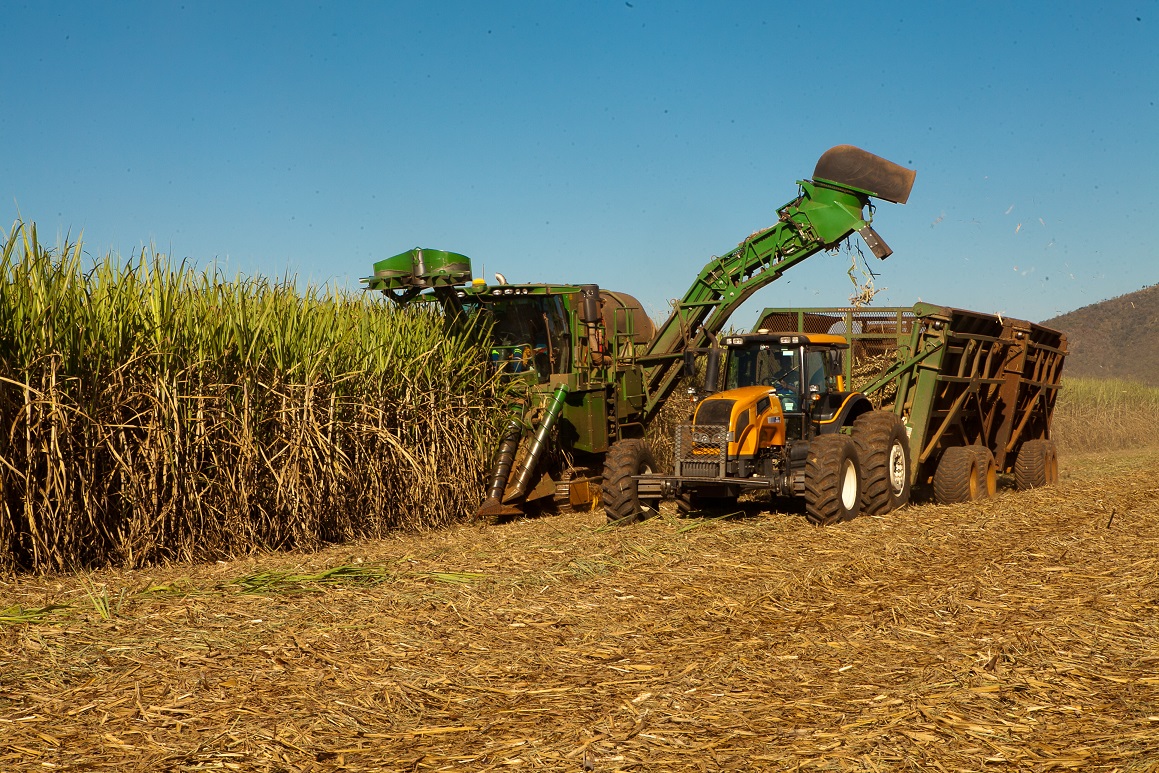RIO DE JANEIRO, BRAZIL – The dry climate that has caused fires on sugarcane plantations in Brazil threatens to reduce next year’s crop for the world’s largest producer of the commodity.
Images of burning sugarcane fields in Brazil’s main crop area have been circulating among traders, brokers, and analysts, and some already expect a reduced crop next year. The impact of fires, along with the dry climate that affects cane growth, could reduce sugar production by 2.8 million tons in 2021, said Arnaldo Luiz Corrêa, a partner at Archer Consulting.
The crop areas of the states of São Paulo, Minas Gerais, Goiás, and Mato Grosso do Sul recorded only between five and 25 percent of average rainfall in recent months, which have left the fields “extremely dry,” said Donald Keeney, senior agricultural meteorologist at Maxar in Gaithersburg, Maryland. The La Niña weather phenomenon could further prolong the drought and threaten the harvest that begins in April.

“We know that La Niña historically brings dry weather to Brazil’s Center-South,” said Patricia Luis-Manso, head of agricultural analysis and biofuels at S&P Global Platts, in an interview last week. “This is a historical trend, not all La Niñas have meant dry weather, but if this occurs, it could be a risk.”
A smaller crop in Brazil could reduce global supply and help determine whether the market will have a surplus or deficit in the 2020-21 season, which begins in October. Analysts are now divided on this. The difference of opinion is based on whether the pandemic will reduce consumption or lead Brazil to produce sugar, which is more profitable, at the expense of ethanol.
Some agronomists are expecting a five percent drop in the sugarcane harvest next year, while several mills estimate that this year’s harvest will end ahead of schedule, said Archer’s Corrêa in a LinkedIn post. The affected cane could still be crushed this year and although it could impact the 2021 harvest, it is still too early to assess this, said Luis-Manso.
La Niña is expected to intensify in the coming months and decline between March and May, Keeney said. The phenomenon tends to last between six to eight months but sometimes lasts a full year. However, the last two instances in which the weather phenomenon occurred – strongly in 2010-11 and more mildly in 2017-18 – Brazil lost little production.
John Stansfield, an analyst with the Sopex Group in London, said he was less pessimistic about the harvest and expected the mills to crush between 590 million and 610 million tons of sugarcane, a volume virtually stable compared to recent years. S&P Platts projects 595 million tons of cane production, said Luis-Manso.
Dry weather has helped increase industrial productivity – the amount of sucrose in the cane – this year and many cane plants are young, tough, and able to withstand stress, Stansfield said at a Platts webinar last week. Dry conditions can increase sugar content but hinder cane plant growth.
“Even if it’s very dry until January, if the rains in February and March are very good, part of that can be offset,” said Luis-Manso. “We’ve seen this before. Also, the age of cane is relatively young compared to a few years ago, so the cane is less vulnerable.”
Source: InfoMoney

